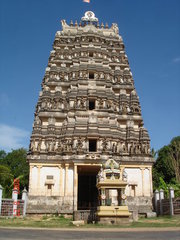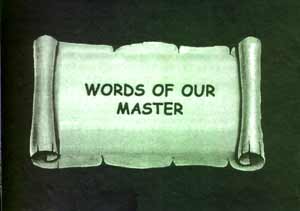|
| |||||||||||||||||||||||||
Vel Worship in Sri LankaDr. (Mrs.) Vimala KrishnapillaiThe worship of Vel1 holds a unique position in the cult of Skanda-Murukan. In many of the Murukan temples of Sri Lanka, the Vel is the mūlamūrti the presiding deity and is considered as an aniconic2 representation of Murukan in his totality for all purposes of ritualistic worship. The Vel is no exception to the Hindu ideal that the divine is immanent in all things and that it embodies the power and energy of Murukan. The focus of this study is on the antiquity, continuity and symbolism of Vel worship in the Sri Lankan tradition The generic roots of Vel worship can be traced to proto-Dravidian and tribal belief systems. Sri Lanka has been chosen as and ideal ground for this study, because many Proto-Dravidian indigenous Tamil traditions have been preserved in this island. The infiltration of Aryan traditions has been weak and slow in Sri Lanka due to its geological and historical isolation from India. Further, Prof. Ellawala concluding his study of religious practices in early Sri Lanka, made a series of relevant observation, "It becomes clear," he said, "that the majority of the civilized people in pre-Buddhist Ceylon were followers of Hinduism in one form or another". Before Buddhism became the established religion of Ceylon several popular proto-Hindu cults prevailed in the Island, features of which are evident today in legends and the surviving folk cults. In Buddhists folk worship the Hindu deities including Skanda continue to lurk in the background, to protect, support and give honor to Lord Buddha. (Ellawala p.161) "The pre-Buddhist gods and god-lings who the average man continued to believe in, were reduced to the position of the humble servants of Buddha -- the God of Gods" (Paranavitarana. S p. 100). Antiquity of Vel worship in Sri LankaEvidences of archeological findings in Sri Lanka and South India, ancient Tamil literary sources, and the belief system of the Veddas point to the antiquity of Vel worship. An analysis of mythology, the Puranic tradition too helps us to unravel the antiquity of Vel worship. Archeological Findings
According to modern archeological findings, Sri Lanka was connected to the Indian subcontinent for the past one million years up to as recently as only 7,000 years. During this vast period, says Director-General of Archeology Dr. Shiran Deraniyagala, (Indigenous Lanka conference), many hundreds of nomadic groups of adivasis or indigenous people must have walked across what is now the shallow Palk Strait to engage in subsistence hunting and gathering activities. Iron Age peoples, by comparison, seen to have settled here about 800-1000 B. C. There were no anthropomorphic icons of Murukan in South India or Sri Lanka before the third and fourth century A.D. Evidences indicate that the aniconic representation of Murukan as Vel preceded that of the anthropomorphic images of Murukan. In prehistoric archeological site, iron Vel, bronze cock, and a gold mouth cover used by pujaris and those who take kavati to cover their mouths were found in Adichanallur in South India. (Deraniyagala P.E.P. 1902) (Thurston E., p. 149) Similar findings in Sri Lanka Puttalam district in 1955 and such related findings found in Ponparippu (Western Coast) Valavganga valley (Southern Coast), Katiraveli (Eastern Coast), Vallipuram, Varani (Northern Coast) and Mathotam, indicate that Vel worship was prevalent and also points to the antiquity of Vel worship (Begely, p. 49). The representation of it as an amulet is also found on the ancient coins and on the crowns of kings (Parker, pp. 469, 538). Ancient Tamil Literary SourcesThe generic history of the Murukan cult is old as the classical language of Tamil itself. Eons ago, in Sangam3 period literary source Murukan was known as Cevvēl or Vēlan meaning ‘red tinged lance' or 'wielder of the lance'. In Puranānūru .56 we find reference to ‘The powerful God dwelling in the Vel. In Akanānūru .158. Paripatal .9. and Painkursmuri .249 references are made to Murukan as Vēlan. Cilappatikāram speaks of Velakottam, implying Vel was singled out and installed for worship and shrines were built around it. In the ancient Dravidian concept of the supernatural, a great deal of religious importance was attached to certain objects, which they considered eminently sacred. The Vel is one such object. The worship was addressed to the outside spirit, which had taken up its residence temporarily or otherwise in the object. The Dravidian notion of the sacred should be understood, both in its positive and negative manifestations as ananku It should also be understood in the symbolism of being here and now -- inke and hippo. The above concept of ananaku is a unique heritage in Hinduism of ancient pre-vedic culture. Peracirayar explains in the Mippattiyal of Tolkāppiyam, the meaning of the word ananku, indicating 18 kinds of deities. Etymological clues lead us to believe that ananku had basically to do with atmosphere of the place. Ancient Tamils identified each land with a particular deity personifying its distinctive qualities, mirroring the essential character of the atmosphere the spirit of nature. The gods of these regions had their origin on earth and evolved in accordance with the geographical characteristics of each region. Kuriñci was the earliest habitat of the South Indian man. In these tracks stood low hills resulting from age long erosion. The occupation of these inhabitants was hunting. The God of the hilly region Kuriñci is Murukan. Tolkāppiyam refers to Murukan as Kuriñci God. The hill God Murukan was worshipped as beauty, fragrance festive character. Murukan, also called Cēyon was an abstract force which in course of time assumed a personality as a chieftain, king or god of the hills, the wielder of the Vel. The Vel represents the power of the bearer, whether the power is seen as hunter, warrior, King or God. The God of Paleolithic hunters associated with the abstract notion of beauty, Muruku has developed from a tribal hunter god, through warrior war god to Murukan the national god of the Tamils. Kantapurānam4 too extols the worship of Vel by portraying the elaborate abhisekam and puja performed by the Devas to the victorious Vel of Murukan soon after it split the body of Cūran. The sthala puranams5 of most of the ancient temples of Murukan situated in Sri Lanka trace the genesis of these temples to Vel worship. Nakīrar in Tirumurukārrupatai praises and extols the protective nature of the Vel as Vīra Vel, Tira Vel, Vinnor serai nīta Vel, Tirukai Vel, etc. The Belief System of the VeddasFrom the point of view of anthropology the work of the eminent scholars referred to in this study are considered authentic. Knox referring to the Veddas of Ceylon said "The wilder and tamer sort of them do both observe religion. They have a God peculiar to them." (Robert Knox pp. 61-63). The Veddas are the indigenous people of this island. "On grounds of ancestral racial and cultural heritage the Veddas, the Sinhalese, and the Tamils are the three primary races of Ceylon." (Stondt, 1901). In our present context the study mainly centers around the Vedda religion. Though the belief system of the Veddas is extremely complex it holds to us a mirror of the genesis of the earlier concepts of God. The Veddas, the aborigines of Sri Lanka whose ethnic origin dates back to the very dawn of evolution are considered to descend from the yakkas or are related to the hunting tribe called Vettar in South India or to the Savaras of India or the Mundari people (Hugh Nevill 1886, Seligmann 1911, Parker 1909). Whatever the historical and literary reference may be, it is evident that a group called Veddas have lived in the jungle solitude in Sri Lanka throughout and remained in complete isolation for 2,500 years. These Veddas were also called Pulindas and Sabaras. The Veddas appear to be basically pre-megalithic people, reaching beyond 1800 B.C. Today they are reduced to a few hundreds verging on extinction. Presently they are being evacuated from their traditional territories to agricultural land and very soon they would be an extinct ethnic group. Today, the identification of Veddas has become quite controversial for most of them have been absorbed into the main communities. They range from fully Sinhalized groups in the South to the fully Tamilized groups in the Eastern coastal belt of Sri Lanka. (Brow, J. 1978). Seligmann ethnography is the standard account of the Veddas, which defines Vedda country as Vedda ratta, an area of about 2400 sq. miles. The area contains the whole of the present Batticaloa District parts of Polonnaruwa, Badulla and Monaragala Districts. "Formally it is known to have embraced the whole of Uva." (Seligmann 1911 p.4) In a sense the great portion of the population of the Eastern part of Ceylon appears at some time or other have been called Vedda rata. (J. Baely. pp. 278-320) In the Vedda hunting community, in almost all their religious rites the arrow (dart, lance, Vel) takes the central role. The arrow or kanai is the predecessor of the lance or Vel. The forms of arrow used by them are of two types, the ordinary hunting arrow and the long bladed, short handled ritual arrow or the Āyudha. The arrows are about 3ft long and are headed with a sharp iron bit nearly six inches long and an inch wide. These arrows vary greatly in the size of their steelhead, Vedda arrows are wider near the stem. (Hugh Neville. 1887). Worship takes the form of dancing and singing resembling that of Kraunci verriattam. It is directed by a priest usually called Kapura it is possible that there is another older name, referring to them which may have been recorded. The dancer becomes often inspired into ecstatic frenzy. The spirit invoked in the arrow is probably identified with Kanta Yaka. An arrow is thrust on the ground and the Vedda dances around it in high frenzy with the ceremonial arrow in hand and hair let down. His offering are coconut, betel leaf, araconut and cooked rice. The arrow dance the simplest of the Vedda dance is performed imploring good luck in hunting or when a spell of ill luck has attended.
The arrow is said to exercise protective power. They leave tiny babes upon the sand for hours together with no other guard other than an arrow struck on the ground by the side. Their belief in the efficiency of this has received no shock, they never know such a child to be attacked by wild beasts. The Veddas also believe in the protective power of the āyudha when stuck on the door of a vacant hut. They say that they are the children of their god's symbol. They believe that they themselves are protected as his children, calling themselves the Iya Vamsa or sons of arrows. The Veddas are never seen without their constant companion, the bow and arrow (Parsons 1907). The tradition of Alakital6, seen among Murukan devotees to this day may have had its gneiss in this belief system of the Veddas. A comprehensive picture of Vedda religion and ritual given in the study made by H. Parker and Seligmann on the Veddas the aborigines of Sri Lanka almost a century ago, reveals a striking parallel between veddoid religious belief system and that of the Kurinchi. Further our study reveals, many indications which justify the assumption of the common origin of the Veddas of Sri Lanka and the wild tribes of South India such as:
Vedda dialect - meanings in Elu & Tamil The above similarities and other evidences are far too numerous to be considered as coincidences. Names of VeddasThe names Kanta, Vēlan, Valli, were common among the Veddas while the names of other gods in Hindu Pantheon were unknown to them. Whence came these names designating the deity Murukan and his Vedda consort? Not from contact with or contiguity of the surrounding the Non-Vedda people of Ceylon in whose neighborhood they have lived for centuries. Totemic TaboosAssociated with deities were certain tribal emblems, of totemic significance, such as the cock and the peacock. The Veddas were almost omnivorous except for their abhorrence of eating beef and fowls. The taboo on eating of fowl, peacock and some of the other strong prejudices are the vestiges of their former habits. The people in Kataragama rarely ate fowls. If they ate, they had to undergo a course of purification. The Veddas used the feathers of pea- fowls to feather their arrows. They thought of these birds as kindly associates, on whose aid they could rely. The facts discussed above indicate that the belief system of the Veddas is closely related to the Murukan cult and Vel worship. Vēlāyuta Temples associated with VeddasThe Veddas of Sri Lanka were closely associated with the vēlāyuta temples in the Eastern littoral region. They were also the hereditary guardians of several of these great temples, Kathirkamam, Tirukkōvil, Tambulivil, etc., Their duty was to protect pilgrims, to prevent bandits from passing and to abstain from any annoyance to the worshippers. From time immemorial they were guards of the Kataragama temple. Their association with prehistoric Kataragama, which was once their habitat, their claim of kinship to Valli, the Sinhalese calling them the kovilwaname vaedda. The prevalence of these Proto-Hindu cults among the Veddas, clearly points to their old faith. Further elaboration of this aspect follows. Vēlāyuta TemplesThe temples where the Vel is the mūlamūrti the presiding deity are known as Vēlāyuta temples. There are a large number of velāyuta shrines in Sri Lanka in the Eastern and Northern provinces, in which the vast majority of the Tamils lived. In the Northern area there are many places of origin associated with the name of Murukan, Kantan such as Kantarodai, Kantvanakadavai, Kantavanam etc. In most of the shrines in the North worship of Vel plays a central role. Some of these temples are very ancient and could be traced to 8th century BC. The locus, origin, histories both mythical and documentary of the Velāyuta shrines, the indigenous forms of worship and local motifs associated with the shrines, the folk life and social setting in the areas surrounding the selected areas too support our study. Folk elements in various locations have merged around these temples and pilgrim centers from medieval times to the present. These temples have their mythical and historical records often related to Murukan mythology as a whole and to the cultic mythic tradition of specific locals. The detail study of these particular temples yields more insight into the worship of Vel. We cite the examples of a few of the Velāyuta temples here. For the purpose of this study we have categorized selected samples into:
Temples Associated with Vedda Origins
We learn that in the early historical period, the eastern coastal belt of Lanka was the habitat of Veddas. The Veddas being, hunters survived by the use of the lance, dart and the bow and arrow. To them these were fundamental to their existence and to their command over the animal kingdom. So legends are woven around these and it is not surprising that the dart or the lance, which became to be represented by as the Vel, became a symbol or emblem of worship. We come across such instance of origin of worship, in many of the temples in Batticaloa District. It has been so at Verukal Kantacuvāami Temple, Mandur Kantacuvāami Temple, Thirukovil etc. The Batticaloa Manmiam narrates an interesting legend. When God Skanda defeated the asuras, he was confronted by the Vahura Hill, which He split into two. The three splintering rays (katir) which originated, were sheltered, one on the Okanda Hill top, one on a white nāval tree at Tirukkovil and the third on a tillai tree at Mandur Hill top. These shrines are often found located on the hilltop or at its foot. The Veddas reverentially observed these as holy places. Worship commenced at these, with simple shrines put up with sticks and poles and ola leaves and later developed into great shrines. In those ancient times the people worshipped these Gods without a mediating priest. In most of these, to this day Vel remains as the Mulamurti but in some others with the passage of time, it has been replaced with an icon of Murukan or even that of Vishnu or Pillaiyar. Vēlāyuta Shrines of the Eastern Littoral Region and KataragamaHere are named a few of the Shrines in the Eastern littoral region where the mūlamūrti is Vel, mostly known as cittira velāyuta kovils, differentiated by the name of the location alone.
All the above named temples in the Eastern littoral region are of Vedda origin and are placed in the Vedda habitat of ancient time. Given below are notes on five of these temples. Cittira Velāyuta Cuvāmi Kovil - Verukal
This shrine is situated at the banks of the river Verukal at Killivetti in the Trincomalee district. It is a temple of ancient legend with a fascinating history. During the epoch of Kantapurana during the epic war of Murukan with asura king Cūrapatman, Murukan's sacred arrow from his bow is said to have fallen on the place called Katira Veil. Like all ancient shrines and temples, the origin of this Verukalam Pati Muruka Vel is also legendary. The Vedda tribes treasured the location and the Vel for worship and ever since it has been a shrine. This had become a recognized temple in the Kulakoddan era. and in the regime of the Vanniyars. Tradition has it that a hidden treasure was revealed by Murukan to a Cettiyar on his pilgrimage to Kataragama from South India. With the proceeds he built a grand temple later demolished in the 16th century by the Portuguese. There are many inscriptions regarding the history of the temple from ancient times. Cittira Velāyuta Kovil - TirukkovilAlong the Eastern coast, about 60 km from the town of Batticaloa is the settlement of Tirukkovil a very ancient Hindu temple. The carefully preserved vimānam
Consent for holding Kanta Puranam recitals was given by the Dutch Government in 1807 A.D. and a mudaliyar erected the present temple, dedicating it to Kantan Katirai-Āntavan. Its location is at this Kantapananturai, (the port of Skanda's arrow). Since of late several additions and improvements have been made. The Vel remains installed as the Mulamurti to this day. Rev. Queroz a historian and Portuguese priest, describes the temple structure as having had three gopurams at the time of destruction by the Portuguese. Sometime in the later Dutch or early British period, when there was a general renaissance of Hinduism in the island, merchants from India erected the temple at that site. Reference to Vedda chieftain Pulian associated with Tirukkovil is found in Tirukkovil temple manager (Taprobanion Nadu Kadu record. p. 127)
Mandur Kandaswamy Temple, BatticaloaThe legend concerning the origin of this Vedda shrine of yore is similar to that of other Murukan places of worship, in the eastern coastal region. One of the three splintering rays emanating, when Vahura hill, was sheltered among the Tillai trees of Mandur. The Veddas who occupied these areas, reverently treasured it as their place of worship. They commenced worship with some sort of a simple shrine built there of poles, sticks, and leaves. Later, the simple shrine assumed the shape of a temple, patronized by the folks who took up permanent abode there, being engaged in cultivation, fishing, etc. Cittira Vēlāyuta Cuvāmi Kovil, Kumarapuram, MullaitivuThe Vedda huntsmen worshipped Vēlāyutam in a simple shrine made of sticks and
Ukanta Malai Vēlāyuta Cuvāmi Temple, Okanda, Ampara DistrictAt the foothill of Okanda Malai is the Vēlāyuta Cuvāmi or Kanta Cuvāmi Temple, dedicated to God Skanda. Okanda Malai, the site has been referred by tradition as one of the place where Emperor Ravana halted for worship, on his journeys from Lankapuram to Koneswaram. Okanda hill top has by long tradition been cited as one of the places where a divine katir from Lord Skanda struck, the Veddas preserved the sanctity of the place with a simple shrine of stick and ola leaves. Katirkāmam: Southeastern RegionIn
myths and legends the worship of Murukan at Kathirkamam goes into the early
Yugas. Until recent times in and around this shrine was the habitat of the
Vedas, who have been referred to in the epic Manimēkalai as Sabarar
pulinar and also sung by Arunakiri Nātar in his devotional songs. The Veddas
It is of relevance to note that in Sabaragamuwa Sama Devala the object of worship is an arrow and not an image of God that is taken out on annual procession (John Davy, Account of interior of Ceylon Land 1821 p.4.). The vēlāyuta temples associated with Veddas listed above confirm the worship of the Vel by the Veddas. Vēlāyuta shrines selected for study from other areas of Sri Lanka
Maviddapuram Kandaswamy Temple - Kankesanthurai (Kovit Kadavai)The temple here was built by Marutha Piravikavalli, daughter of Thissai Ukkira Cholan, king of the Chola regime in South India. She had come on a pilgrimage to Naguleswaram to bath in the holy water of Keerimalai to cure her congenital facial disfiguration. In her journey she noticed an old man, Sadaiyanar venerating with daily prayers a silver Vel planted in a cove of a tree. Her wish to house this Vel was fulfilled by her father. Later the Vel gave place to Kanthasamy. Nallūr Kanta Civāmi Temple, Jaffna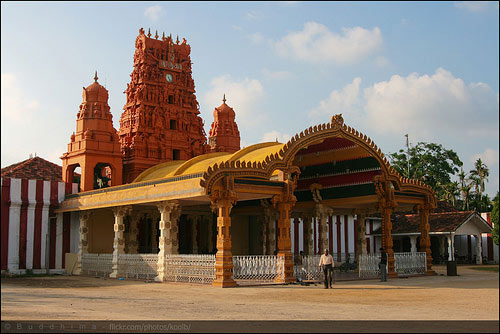
Vel is the Mulamurti here. According to the Yālpāna Vaipava Malai the origin is attributed to Bhuvenaka Vaku, Chief Minister to Kulangai Ariya Cakravarti, who was reigning at Singai Nagar. However, several references give the entire credit for building the city of Nallur and the Kanta Civāmi Temple to Sempaha Perumal who ruled at Nallur under the name of Bhuvenka Bahu for 17 years from 1450 A.D. (Mayilvagana Pulavar.1739). In the battle of Vannarponnai, after Sangili Kumara's defeat the former Kanta Civāmi temple was leveled to the ground in 1620 by Philip de Oliveira, leaving no traces of its foundation. The present temple at Nallur originated during the day of the Dutch rule by the effort of Mappana Mudaliyar. This temple may be said to be the most popular place of worship in the whole of Jaffna peninsula, with its peak level of million reaching at festival time. This remains a temple of Vel. Selva Sanniti Murukan Temple, Thondaimanaru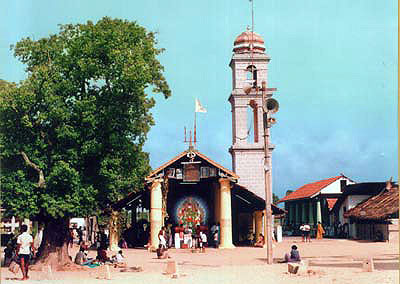
Revered as Sella Katirkāmam of the North, this temple of the Vel at Thondaimanaru is situated about twenty miles north of Jaffna. Here too, as at Katirkamam, a free non-agamic environment for worship pervades the place, persons of various creeds and castes congregate here for darshan of the Vel installed at this blessed cannitānam (Celva Canniti). The waters of Thondaimanaru, a tīrtam where fresh water flows into the sea past the site, elevates the location to a sthalam, blessed with the triple adjuncts of tīrtam, sthalam and mūrti. This waterway said to have been excavated under the supervision of Karunakara Thondaiman. He was sent here for procurement of salt supplies, by Kulatunka Colan, who reigned in South India from 1070 to 1118 A.C. The temple by the side of the newly cut waterway would have been the place of worship of this settlement that got founded in the locality. The temple however suffered the fate of devastation, like all other Hindu temples, in the hands of the foreigners of the 16th century. At this stage, the story shifts to one Kadirkamar, a keen devotee of Murukan, who proceeded bewailing to Katirkamam, and was rewarded there with the gift of a silver Vel . He brought this sacred Vel and installing it in a madam at the sacred site, performed daily pujas to it. Later, he was permitted to use the temple itself, which he took over. He and his group have been managing and officiating ever since, with piety and satisfaction to all devotees. Sri Katirvēlāyuta Temple, ColomboThis vēlāyuta temple is located at Śrī Kathiresan Street, Colombo 13. It was built in 1810 by Kulantavel, son of Tirumani of Valvettithurai, Jaffna. (Yālpānam) It was known until recently as Yālpānantar Katirvēlāyuta Cuvāmi Kovil. As in the Nallur temple the Vel remains as the mūlamūrti. Symbolism of the VelThe Vel is worshipped as the visible form of God's power. The Vel, even in the face of very long history, by a certain persistence but shifting of emphases and modifications of meaning has came to represent the power of Murukan the wielder of the Vel. The archetype of Vel symbol took on different meanings with time and coalesced around the personality of Murukan. The history of Vel illustrates the process of the symbol system by which a religion may survive and adapt itself to a series of cultural changes. Without symbolism a culture and religion cannot evolve. Every symbol participates in a web of significance which we call culture. Gods tend to reflect the cultural milieu of man. As Pettazzoi argued, when cultural context changes the imageries by which gods were understood also changes. In a large measure the way in which the people apprehend the divine is a statement about the way they see themselves and their content in a given moment. As in all symbols the Vel is multi-layered, its meaning may be understood in its anthropological, socio-cultural psychological and spiritual aspects. The Vel persists with the coalescence of message but giving a broad collection of related meaning with the mood of the moment and earlier history of the symbol. In a symbol as Caryle pointed out, there is concealment and jet the meaning continues to evolve with time. Old symbols never die but take on new meaning. To the hunting tribes the Vel embodied the power that could pierce the quarry to provide sustenance. To the warring chieftains and kings the Vel piercing the enemy represented valor and victory connoted by the names of Tīravēl and Vettivēl. Presently Vel symbolizes Jñānas'akti (the power of gnosis). Jñānavēl pierces avidyā (ignorance) and redeems man from illusion, maya. The Vel now becomes the instrument of spiritual victory and the means to conquest of all misfortune. In the words of Dr. Ananda K. Coomaraswamy "Any great symbol becomes all things to all men, age after ages it yields to men such treasures they find in their own heart." (Coomaraswamy, A. 1977) The power of the symbol lies not on the object itself but on the thought forces projected into it. A symbol is an outwardly projected image of the inward feeling and thoughts of man. Symbols act to establish powerful persuasive moods and motivation in man by formulating conceptions of factuality, that the moods and motivation seems uniquely realistic. The symbol Vel retains its value through antiquity, fresh interpretation and sincere belief. The relationship between various symbols and the human psyche operates in all the paths of the different bhakti cult. Freud was the first to give an interpretation from which symbols arose. Jung went beyond these images emphasizing man's quest for God. In the psychology of the unconscious, Jung has dealt with the symbolism of ancient religion and mythology. Jung in dealing with it has said that man's most vital need is to discover his own reality through the cultivation of symbolic life. Jung affirms that man is in need of symbolic life but the modern man has no symbolic life. He confirms that man's most vital need is to discover his own reality through the cultivation of symbolic life. Despite our scientific age of rationalism, the imagery of our ancestral fears, hopes and desires, survive in a repressed and improvised form through dreams mythology, rituals and symbols. The dreams symbol and myth making, still remains as a natural condition and activity of the unconscious mind (Jung 1938). Freud also believed that the collective experience of the race is recorded in the individuals subconscious mind. They persist in the ancestral memory and take on new meanings. The symbol of Vel is deeply rooted in the collective consciousness of the Tamils and remains an object of veneration to this day. It animated the generation of the past, as it animates the generation of today. Symbolism assumed great significance in Hinduism that everything had its exoteric and esoteric meaning. Vel too could be understood to have an esoteric meaning related to the inner self. Though no formula can confine God, He provides scope for being adored in a variety of ways by the different religions. The facets of Īsvara undergo changes of names, forms and attributes according to the attitude and attachments of the worshipper. Symbols in general, particularly, religious symbols are not mere objective pictures but are highly subjective in that they form the most sacred and intimate part of ones being. With the deeper understanding of the symbolic significance of Vel, one's awareness of God is more easy and immediate. Hindu attitude is that, God under whatever name, form or symbol sought, comes forward to meet the seeker and help his progress onward, through means suitable to his stage of development. The worship of Vel to this day is a prominent, popular and continuing tradition in Sri Lanka. In our study of Vel worship in Sri Lanka, we have correlated relevant aspects from the fields of anthropology, archeology, sociology, psychology and theology. NOTES1 Vel: the Tamil word for a spear, a lance, a javelin or, arrow. The arrow may be taken as the proto-type of the Vel. It denotes a long handled sharp metal pointed weapon of hunting or war of ancient time. The Vel of Murukan are of two basic types. One is Vel, the leaf shaped lance and the other is Sakti a double or triple headed lance commonly associated with the Goddess. The Vel became inter changeable with the Sakti in the 15th century. 2 Aniconic: A representation halfway between the anthropomorphic and formless such as Siva lingam, Saligram Sulam. 6 Alaku: means protection in Tamil. Piercing the leaf shaped spearhead on the body for protection is called alakuidal. 7 Yaka: In Vedda dialect yaka means spirit, which includes both benevolent and malevolent forces, while teyvam in Tamil and deviyo in Sinhala in common parlance today refer to benevolent forces only. ReferencesBooks
Periodicals
Dr. Vimala Krishnapillai, B.Sc., M.Ed., M.Phil., Ph.D, is Lecturer in Educational Psychology in the Faculty of Education of the University of Colombo. Surrounded by modern office furniture yet studying ancient tribal belief systems, she has published research articles and books in the fields of education and religion. She may be contacted by e-mail at vimalakrishnapillai@yahoo.com. See also this related article by Dr. N. Shanmugalingam on
|
| Living Heritage Trust ©2021 All Rights Reserved |
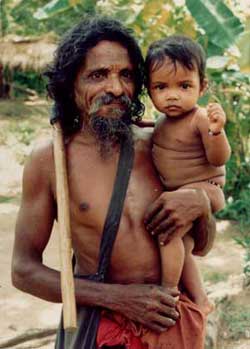
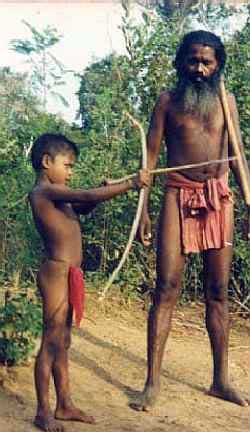
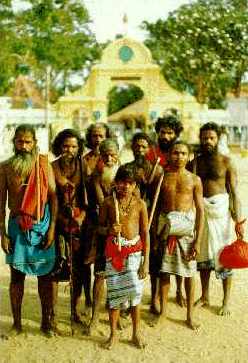
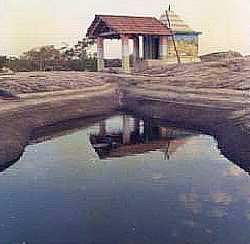

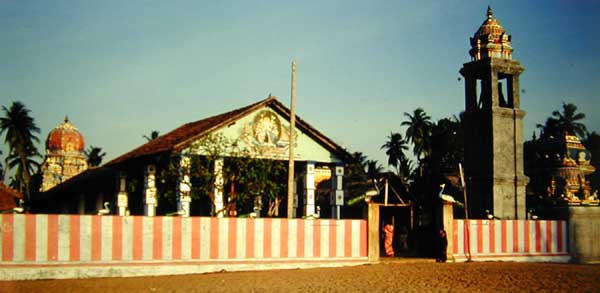
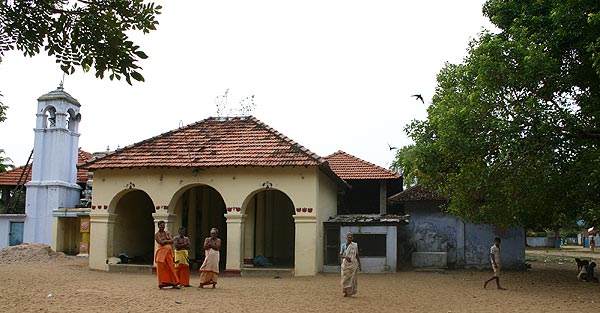
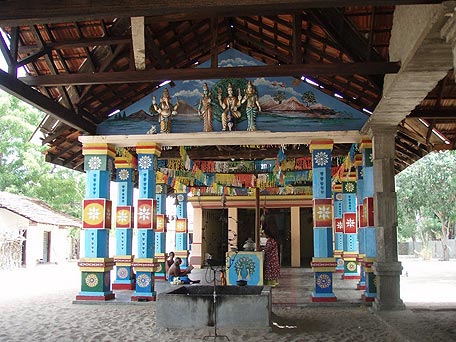
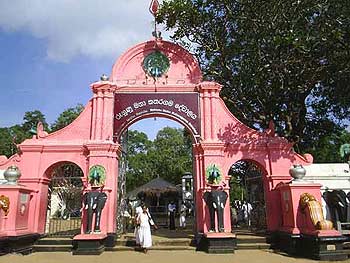 here claim relationship to Murukan through Valli. Even to this day the Veddas
are represented in the temple procession during the festival. The Kapurālas
who are supposed to be the descendant of Valli perform the Pujas today in this
shrine. Their performance of rituals is non-agamic. Traditions claim that the
Vel worshipped to this day at the summit of Katiramalai
Hill was implanted by Murukan himself after his victory over Cūran. We have to
note that Kataragama Deviyo is the only god common to the Vedda and the Sinhala
people. From the14th century we can trace the identification of the god of
Kataragama with Skanda Kumara and Valli to veddoid Sri Lanka. (Heinz Bechert.
p.110)
here claim relationship to Murukan through Valli. Even to this day the Veddas
are represented in the temple procession during the festival. The Kapurālas
who are supposed to be the descendant of Valli perform the Pujas today in this
shrine. Their performance of rituals is non-agamic. Traditions claim that the
Vel worshipped to this day at the summit of Katiramalai
Hill was implanted by Murukan himself after his victory over Cūran. We have to
note that Kataragama Deviyo is the only god common to the Vedda and the Sinhala
people. From the14th century we can trace the identification of the god of
Kataragama with Skanda Kumara and Valli to veddoid Sri Lanka. (Heinz Bechert.
p.110)